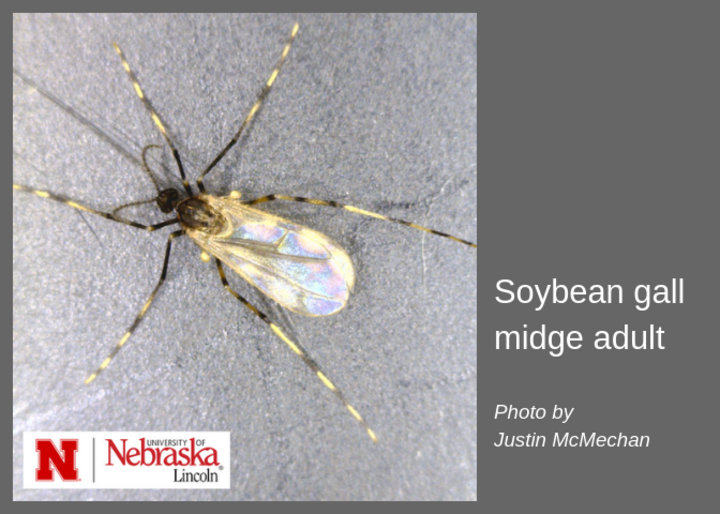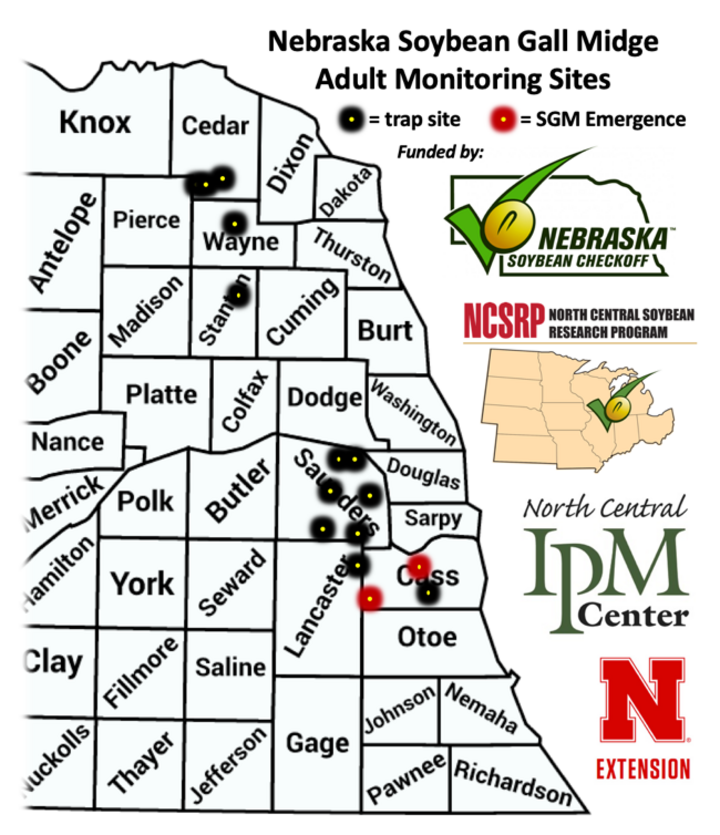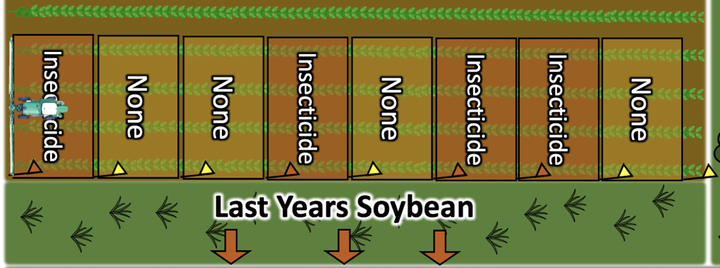

On June 14 and 15, 2019, soybean gall midge adults (Figure 1) were collected from Cass County (red dots; Figure 2). For more information on the larvae and plant injury see this UNL CropWatch article. Trap sites in Saunders and Lancaster counties are checked daily and have not shown any adult emergence.
If you have soybean fields in Cass County or Otoe County and have had soybean gall midge injury in previous years in adjacent fields, an edge treatment of an insecticide on soybean would be warranted. We ask those of you outside of areas where emergence is occurring to delay making any insecticide applications until adult soybean gall midge emergence occurs in your area. We will continue to post updates on soybean gall midge emergence as it occurs at the other sites.
Rough degree day calculations in Nebraska indicate that Ithaca, Mead, and Wahoo areas are approximately 100 degree days behind the southern Cass County sites. The West Point area is about 220 degree days behind, and the Norfolk and Concord areas are about 300 degree days behind. Recent daily accumulations are around 24 degree days per day so we are not expecting emergence for several days at the northern sites.
Growers spraying too early may not have enough residual insecticide activity when adults emerge in the area and may not be able to spray the field again in that period, depending on label restrictions, limiting efficacy and increasing the likelihood for plant injury from gall midge.
I’m in an area with soybean gall midge emergence. Now what?
Because this is a new soybean pest, we do not as yet have research-based recommendations; however, we have developed some preliminary recommendations based on our recent soybean gall midge observations. Those who have experienced significant economic losses from soybean gall midge are advised to use an insecticide with residual activity. This application should be made as soon as possible after adult soybean gall midge emergence occurs in your area. We don’t recommend making an application if a field can’t be sprayed within six days of first adult emergence of soybean gall midge.
Research is currently being conducted on the timing of insecticides relative to the emergence of soybean gall midge to determine a window of efficacy for insecticide applications. Closely related insects to this species have a very short life span as adults so we expect that all of the egg laying will be done within that time period, greatly reducing the efficacy of an insecticide application. Also, be sure to adhere to the label when applying a pesticide.
Making an Insecticide Application

For your benefit, it’s best to not spray in two to three areas along the edge of the field (50 - 100 feet long and 90-120 feet wide, depending on the length of the boom) to determine whether the insecticide worked. If you’re in Nebraska and need assistance with evaluating damage later in the season, contact Extension Entomologists Justin McMechan (402-624-8041) or Tom Hunt (402-584-3863). Figure 3 provides a visual demonstration of what sprayed and unsprayed (none) might look like along a field edge.
Related CropWatch Articles
Orange Gall Midge in Soybeans (Aug. 1, 2018)
Survey of Orange Gall Midge in Nebraska: A Potential Pest of Soybeans (Aug. 23, 2018)
